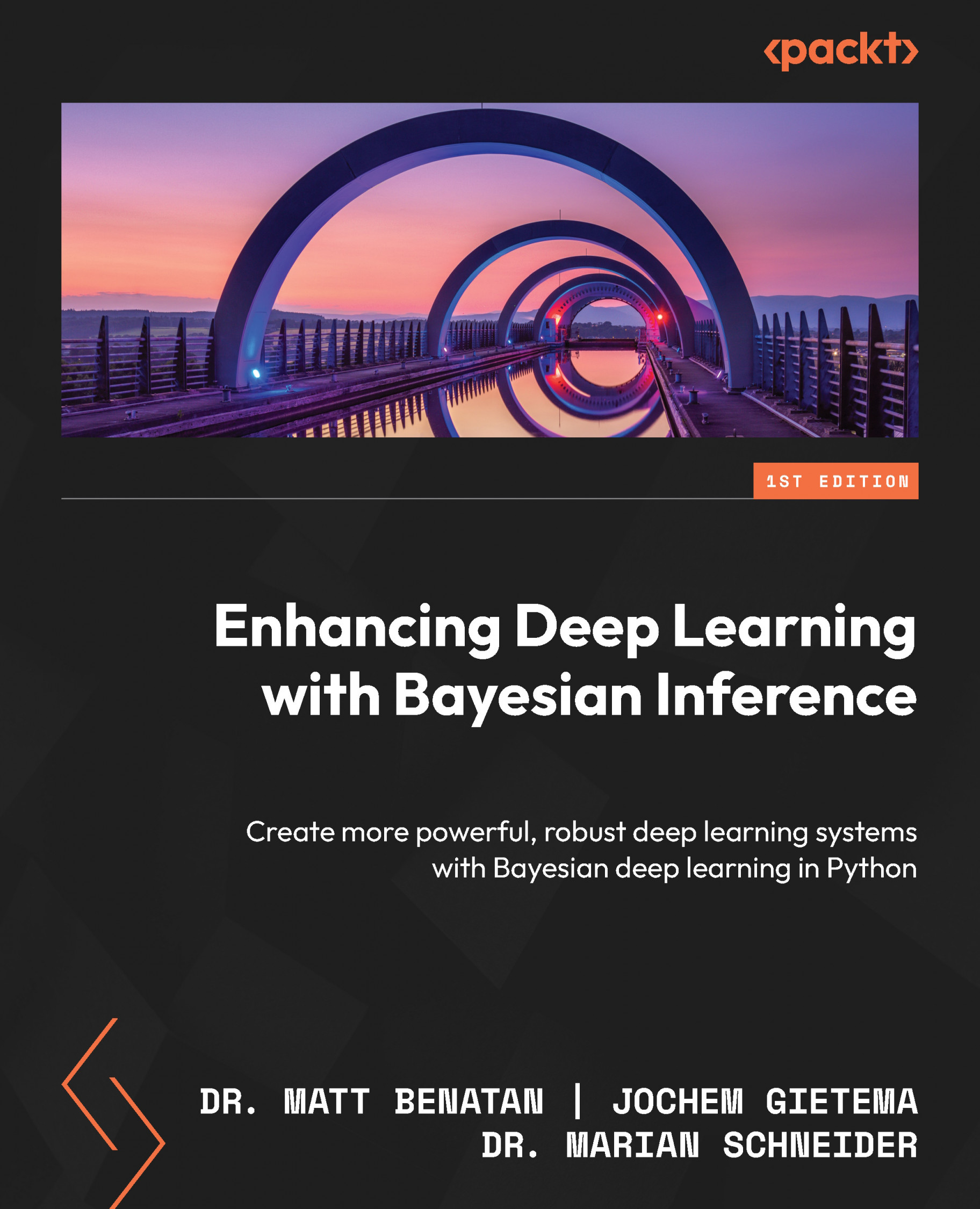- 中图分类号: TP3
- 语种: ENG
- 出版信息: Packt Publishing 2023 386页
- EISBN: 9781803237251
- PISBN-P: 9781803246888
- 原文访问地址:
KG评星
知识图谱评星,是一种基于用户使用的评价体系,综合图书的评论数量、引文数量、Amazon评分以及图谱网络中节点的PageRank值(即考虑相邻节点数量和重要性)等多种因素计算而得出的评价数值。星级越高,推荐值越高。CAT核心级
核心学术资源(CAR)项目作为教图公司推出的一项知识型服务,旨在打造一套科学、有效的图书评价体系,并协助用户制定相应的馆藏建设方案。CAR项目调查和分析12所世界一流大学的藏书数据,以收藏学校的数量确定书目的核心级,核心级越高,代表书目的馆藏价值越高。选取核心级在三级以上,即三校以上共藏的图书作为核心书目(CAT)。Develop Bayesian Deep Learning models to help make your own applications more robust. Key Features: * Gain insights into the limitations of typical neural networks * Acquire the skill to cultivate neural networks capable of estimating uncertainty * Discover how to leverage uncertainty to develop more robust machine learning systems Book Description: Deep learning is revolutionizing our lives, impacting content recommendations and playing a key role in mission- and safety-critical applications. Yet, typical deep learning methods lack awareness about uncertainty. Bayesian deep learning offers solutions based on approximate Bayesian inference, enhancing the robustness of deep learning systems by indicating how confident they are in their predictions. This book will guide you in incorporating model predictions within your applications with care. Starting with an introduction to the rapidly growing field of uncertainty-aware deep learning, you’ll discover the importance of uncertainty estimation in robust machine learning systems. You’ll then explore a variety of popular Bayesian deep learning methods and understand how to implement them through practical Python examples covering a range of application scenarios. By the end of this book, you’ll embrace the power of Bayesian deep learning and unlock a new level of confidence in your models for safer, more robust deep learning systems. What you will learn: * Discern the advantages and disadvantages of Bayesian inference and deep learning * Become well-versed with the fundamentals of Bayesian Neural Networks * Understand the differences between key BNN implementations and approximations * Recognize the merits of probabilistic DNNs in production contexts * Master the implementation of a variety of BDL methods in Python code * Apply BDL methods to real-world problems * Evaluate BDL methods and choose the most suitable approach for a given task * Develop proficiency in dealing with unexpected data in deep learning applications Who this book is for: This book will cater to researchers and developers looking for ways to develop more robust deep learning models through probabilistic deep learning. You’re expected to have a solid understanding of the fundamentals of machine learning and probability, along with prior experience working with machine learning and deep learning models.







 京公网安备 11010602104826号
京公网安备 11010602104826号
